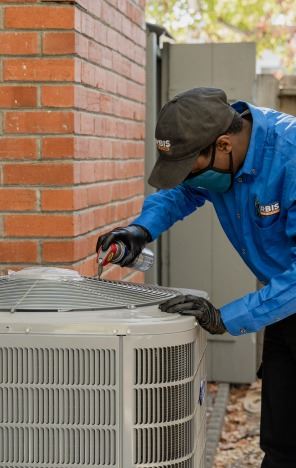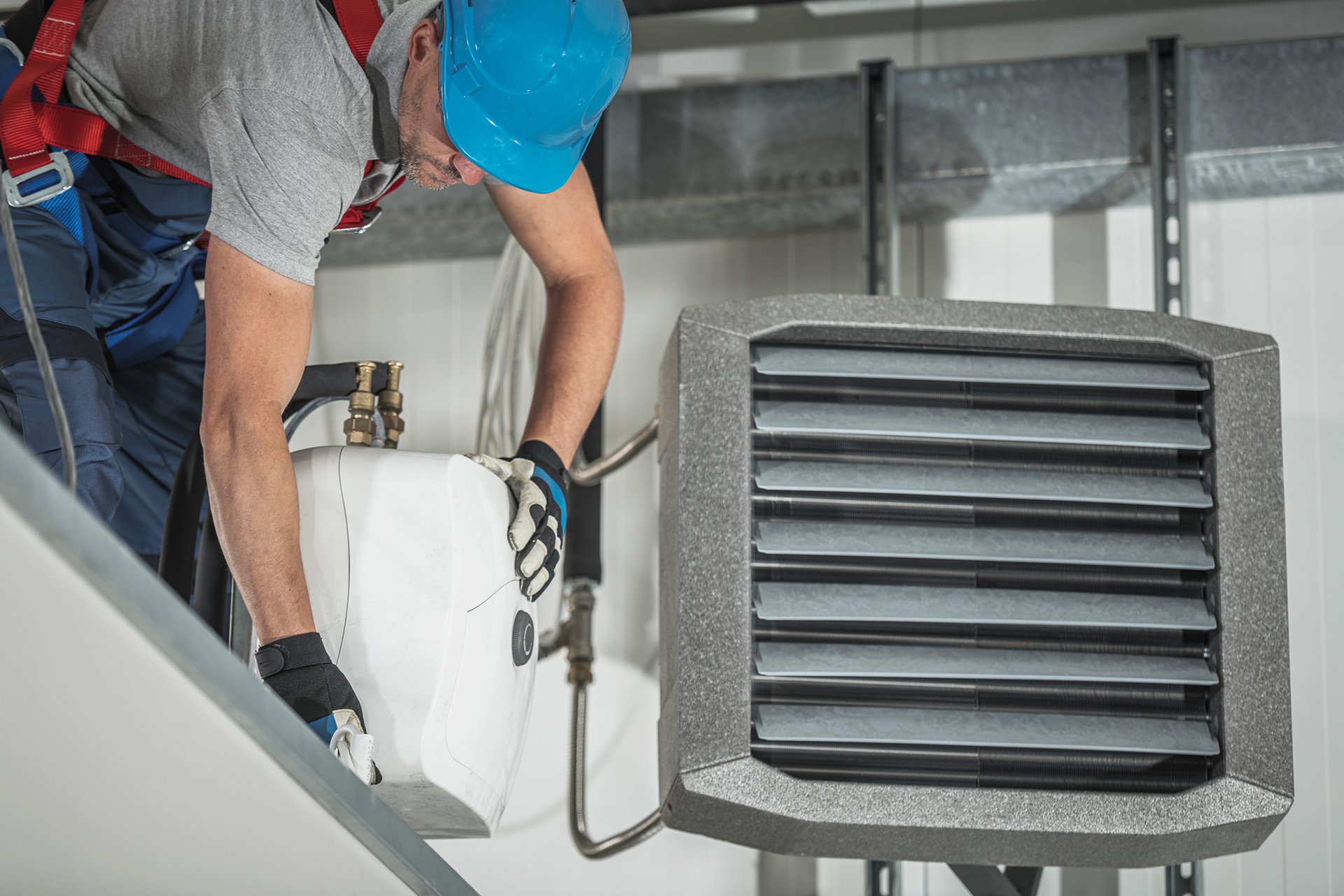Advice from Technicians on heat pump installation ooltewah tn
Advice from Technicians on heat pump installation ooltewah tn
Blog Article
How a Warm Pump and Heating System Interact to Optimize Your Home's Home heating Performance
Recognizing how a heatpump and heating system job with each other is necessary for home owners looking for effective home heating remedies. Each system has its toughness, offering a well balanced strategy to home comfort. The warm pump masters moderate temperatures, while the heater delivers rapid heat throughout severe cold. This synergy not just minimizes energy prices however additionally boosts the lifespan of both home appliances. What aspects influence this partnership, and how can property owners maximize their advantages?
Comprehending Warmth Pumps: How They Function
Numerous individuals may be unfamiliar with their internal functions, warmth pumps play an important role in modern home heating systems. These devices run by moving warm from one location to one more, utilizing the concepts of thermodynamics. In cooler months, a warm pump extracts warmth from the outside air, ground, or water, and transfers it indoors to warm up the living area. Conversely, during warmer months, it can turn around the procedure, functioning as an ac unit by eliminating heat from inside to the outside.Heat pumps include an evaporator, compressor, growth, and condenser shutoff. The cooling agent within the system absorbs warmth as it vaporizes at low temperatures and stress. The compressor after that increases the stress and temperature level of the cooling agent, enabling it to launch heat as it condenses. This reliable procedure can greatly reduce energy consumption contrasted to typical heating techniques, making heat pumps a sustainable choice for environment control in homes.
The Function of Furnaces in Home Home Heating
Heaters play a crucial duty in home heating by supplying a dependable resource of warmth throughout the colder months. They run by generating warm through combustion or electric resistance, dispersing it throughout the home using air ducts or glowing systems. The efficiency of a heating system is frequently measured by its Annual Fuel Use Performance (AFUE) score, which suggests exactly how successfully the system converts fuel into heat.Furnaces can utilize different energy sources, including natural gas, electrical energy, oil, or gas, permitting house owners to choose the most appropriate choice for their needs. Unlike heatpump, which may battle in extreme cool, heating systems preserve regular efficiency, making certain that indoor temperature levels continue to be comfy regardless of exterior conditions. Additionally, modern heaters often come geared up with innovative technology, such as clever thermostats and variable-speed blowers, improving their efficiency and responsiveness. This adaptability makes heating systems a crucial element in comprehensive home heating strategies.

Benefits of Utilizing Both Systems With Each Other
Combining the toughness of both heating systems and heat pumps can result in a more reliable and effective home heating solution. Utilizing both systems permits home owners to make the most of the heatpump's power effectiveness throughout milder temperature levels while relying upon the heating system for more extreme cold conditions. This double method can greatly reduce power expenses, as heatpump eat much less electricity than standard home heating techniques when temperatures are moderate.Additionally, utilizing both systems with each other can boost convenience degrees in the home. Heatpump can give regular, even home heating, while furnaces can swiftly raise ambient temperatures when required. The combination of both systems can expand the lifespan of equipment by decreasing wear and tear on each device, as they share the workload. Ultimately, property owners can appreciate a balanced, cost-efficient heating remedy that changes perfectly to varying weather, guaranteeing a cozy and inviting home throughout the winter months.
Exactly How Heat Pumps and Furnaces Complement Each Various Other
When homeowners integrate warmth pumps and furnaces, they develop a complementary heater that maximizes efficiency and convenience. Heat pumps run by moving warmth from the outdoors air or ground, making them very effective in moderate climates. They stand out during milder temperatures, giving cost-effective heating. On the other hand, heating systems generate warmth via burning or electric resistance, providing solid, instant heat during extreme cold conditions.The mix of these two systems permits dynamic changes based upon temperature variations. During warmer months or milder wintertime days, the heatpump can take the lead, saving energy and minimizing prices. As temperatures decrease, the furnace can seamlessly involve, making sure regular warmth throughout the home. This synergy not only maximizes power usage yet also improves the life-span of both systems, as each unit operates within its perfect efficiency variety. With each other, they produce a well balanced setting that adjusts to varying environment demands.
Optimizing Effectiveness: Tips for Homeowners
House owners can boost their heating efficiency with several practical methods. Establishing a routine upkeep timetable, integrating wise thermostat modern technology, and applying reliable insulation and sealing options are essential steps. These procedures not just improve comfort but also minimize energy costs.
Routine Upkeep Set Up
To assure maximum heating effectiveness, establishing a routine maintenance timetable is vital for any home. Homeowners need to prioritize routine examinations of both warm pumps and furnaces to ascertain peak performance. This includes changing air filters each to three months, as clogged up filters can substantially minimize effectiveness. In addition, organizing specialist upkeep at least yearly permits technicians to determine and resolve possible problems prior to they escalate. House owners need to additionally cleanse the heatpump's outside device to protect against debris build-up that can hinder air flow. By adhering to a normal upkeep routine, home owners not just boost their heater' efficiency yet likewise expand their life expectancy, leading to higher convenience and reduced energy expenses throughout the chillier months.
Smart Thermostat Combination
Incorporating a smart thermostat right into a home heating unit can significantly boost power performance, specifically as it permits precise control over temperature setups. These gadgets can discover the property owner's schedule and choices, automatically adjusting the temperature level to optimize convenience while decreasing energy usage. As an example, they can reduce heating during times when the home is unoccupied, lowering unneeded intake. Several wise thermostats likewise supply real-time energy usage information, allowing homeowners to make enlightened choices about their home heating practices. Additionally, remote access via mobile phone apps enables customers to readjust setups from anywhere, making certain the home is warm upon return. In general, clever thermostat integration not just boosts convenience but substantially contributes to energy financial savings and efficiency.
Insulation and Securing Solutions
Smart thermostats play a vital function in energy performance, however their effectiveness can be considerably improved by correct insulation and sealing remedies. Home owners should focus on company website insulating attics, walls, and floors to reduce warmth loss. Top notch insulation materials, such as spray foam or fiberglass, can substantially improve thermal resistance. Additionally, securing spaces around windows, ducts, and doors stops cool air infiltration and warm retreat. Weatherstripping and caulking are efficient methods for addressing these leakages - heat pump replacement ooltewah tn. Routine assessments for air leakages, together with making use of blower door tests, can help determine issue locations. By spending in insulation and sealing, home owners can optimize the efficiency of their home heating systems, ultimately bring about decreased energy usage and reduced utility expenses
Typical Misconceptions About Heat Pumps and Furnaces
What false impressions border heatpump and heating systems? Many individuals incorrectly think that warmth pumps are inefficient in colder climates. In reality, contemporary heatpump are created to run efficiently also in low temperatures, giving reliable heating throughout wintertime. Another common myth is that heating systems are constantly much more reliable than heat pumps. This depends on the certain power resources and effectiveness rankings of the systems in concern. Some might likewise think that using both systems at the same time is unneeded, yet actually, this combination can enhance heating effectiveness, particularly during severe climate condition. Additionally, individuals usually think that heatpump call for constant upkeep, when truthfully, they have comparable maintenance requires to traditional heating unit. By unmasking these myths, homeowners can make even more informed choices concerning their heating alternatives, eventually causing boosted convenience and power efficiency in their homes.
Upkeep Considerations for Combined Systems

Regularly Asked Inquiries
Can Warmth Pumps Job Effectively in Very Cold Climates?
Heat pumps can struggle in incredibly chilly climates due to reduced efficiency and warm extraction constraints. Developments in modern technology have led to models designed for far better performance in such conditions, improving their practicality in rough settings.
For How Long Do Heat Pumps and Furnaces Usually Last?
Warmth pumps usually last 15 to 20 years, while heaters have a life expectancy of 15 to thirty years. Regular upkeep can extend their long life, making certain reliable operation and reducing the need for early substitutes.

What Is the Average Cost of Setting Up Both Systems?
The average expense of setting up both a heatpump and a heater usually varies between $5,000 to $10,000 - heat pump replacement ooltewah tn. Aspects affecting this expense consist of system size, installation complexity, and regional labor prices
Are There Tax Obligation Rewards for Utilizing Energy-Efficient Heating Solutions?
Several house owners ask about tax incentives for energy-efficient heater. Various federal and state programs usually supply credit histories or rebates, urging the fostering of sustainable technologies to reduce power intake and advertise environmental duty.
Just how Do I Select the Right Dimension Heat Pump and Furnace?
Selecting the appropriate size heatpump and heater involves determining the home's square video footage, thinking about insulation quality, and reviewing neighborhood environment. Consulting a professional can guarantee ideal system efficiency and power performance based on particular demands. heat pump service. Recognizing how a warm pump and heating system job with each other is vital for house owners seeking efficient heating options. In cooler months, a heat pump extracts warm from the outside air, ground, or water, and transfers it indoors to heat the living space. When home visit this website owners integrate heat pumps and furnaces, they create a corresponding home heating system that makes best use of performance and convenience. Heat pumps run by transferring warmth from the outdoors air or ground, making them very effective in moderate environments. Warm pumps can battle in incredibly chilly climates due to lowered performance and warmth extraction constraints
Report this page